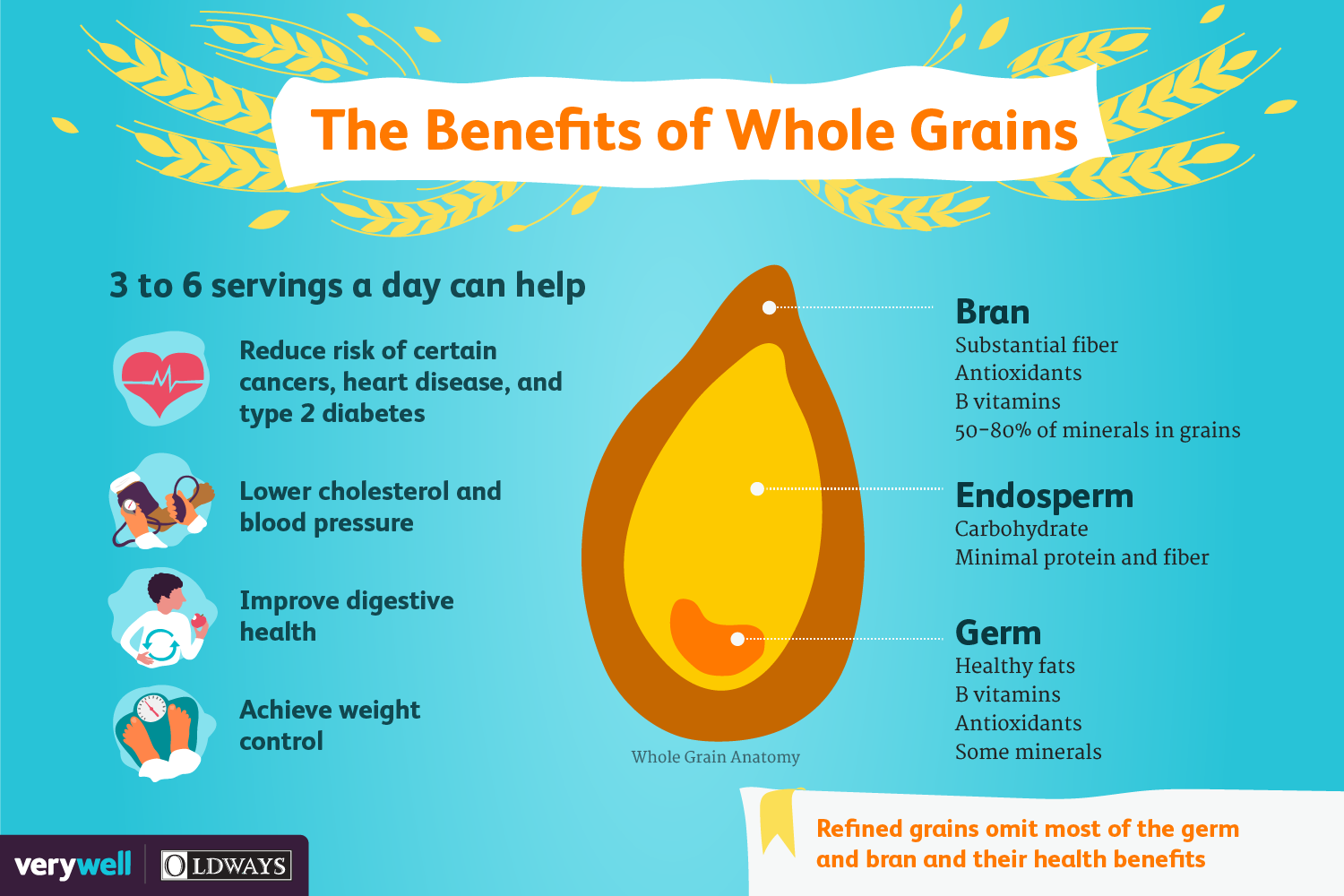Share This
This blog was originally posted on VeryWell.com. See the original post here.
Ancient grains, like freekeh and farro, continue to gain favor with chefs, tastemakers, and trendsetters. While fashionable ingredients like these may carry a higher price tag, budget conscious shoppers need not fear missing out on the whole grain trend.
Humble whole grains like brown rice, whole wheat, oats, and corn can be just as tasty and healthy. In fact, much of the research on the health benefits of whole grains has been conducted on such commonly available grains.
Cutting Costs With Healthy Eating
Healthier diets need not be accompanied by higher food costs. In a study of 136 children and their parents, researchers found that eating more whole plant foods (including whole grains), was associated with a $0.63 lower daily food cost.
Similarly, another study found that choosing a plant-based diet with olive oil, rather than a budget MyPlate diet, could save $746.46 per person per year and provide vastly more servings of fruit, vegetables, and whole grains.
Whole vs. Refined Grains
Don’t let your wallet dictate your wellness. Because they contain all of their nutritious bran, germ, and endosperm, even the humblest of whole grains may offer protection against type 2 diabetes, heart disease, stroke, and more. (Refined grains strip away most of the bran and the germ and thus their nutritional offerings.)
More and more brands are pricing whole grain foods at or near the same cost as the refined versions, meaning you can multiply your intake of nutrients at little or no extra charge.
In a recent stroll through the local supermarket, products such as Barilla pasta, Minute Instant Rice, Success boil-in-a-bag Rice, Uncle Ben’s Ready Rice, and La Tortilla Factory Organic Tortillas, were all priced equally between the refined grain and whole grain counterparts.
Simple Whole Grain Options
If you’ve walked past any of these grains in favor of trendier, flashier ingredients, it’s time to do a double take.
The building blocks of a healthy meal may already be in your pantry.
Brown Rice
Brown rice is a great gateway whole grain. After all, nearly every culture in the world features rice-based dishes.
Long grain brown rices, like brown basmati or brown jasmine, are well suited as the foundation for curries and stir fries, while short grain brown rice is better for sushi and risotto. Brown rice can even be cooked in stock until soft and starchy, then blended and used in place of heavy cream.
Brown rice is not the only whole grain rice out there, though. Red rice, black rice, and wild rice (technically not related to rice) are all great options.
Next steps: Once you’ve mastered brown rice, try experimenting with other whole grains like millet, quinoa, sorghum, or farro. Each of these grains fluffs into individual kernels, making them equally well suited for grain salads or pilaf-style dishes.
Whole Wheat
Many bakers are pleasantly surprised to learn that whole wheat flour can be substituted for up to 50 percent of the all-purpose flour in most recipes without making adjustments. To convert a recipe to 100 percent whole wheat, simply add an extra two teaspoons of liquid per cup of whole wheat flour, then let the dough rest for 20 minutes after mixing.
White whole wheat flour has a milder flavor and lighter color, and whole wheat pastry flour and sprouted whole wheat flour are also popular picks for baking. Wheat berries (including ancient wheats like farro and spelt) have a pleasant chew even when chilled, making them ideal for both warm and cold grain salads, as well as pilaf-style dishes.
Next steps: Once you’re familiar with whole wheat, try an ancient wheat, such as einkorn, spelt, farro, or freekeh.
Oats
Oats are a breakfast staple for a reason: their creamy, stick-to-your ribs consistency is unmatched by most other grains and the subtle undertones of butterscotch pair beautifully with cinnamon, fruits, nuts, and milk.
For an easier-to-cook version of risotto, try substituting steel cut oats for the rice. Or, spice up your porridge routine with a savory oatmeal bowl, topped with sriracha, bacon bits, or a fried egg.
Next steps: If you’re ready to branch out from oatmeal at breakfast, try reheating leftover millet, quinoa, or buckwheat on the stovetop with milk and honey.
Whole Grain Cornmeal
Fresh corn is usually classified as a starchy vegetable, but dried whole corn, in the form of corn flour, cornmeal, or corn grits, is a delicious whole grain option. Even popcorn is considered a whole grain. Grits and polenta dishes made from whole grain corn have a more robust, corny flavor than the starchy blank slate of refined (degerminated) corn.
Next steps: If porridge-y, polenta-style grains are your jam, then teff and amaranth are the ancient grains for you to try next.
For more information on how to find affordable whole grains, check out our NEW infographic:



Comments
Add a Comment